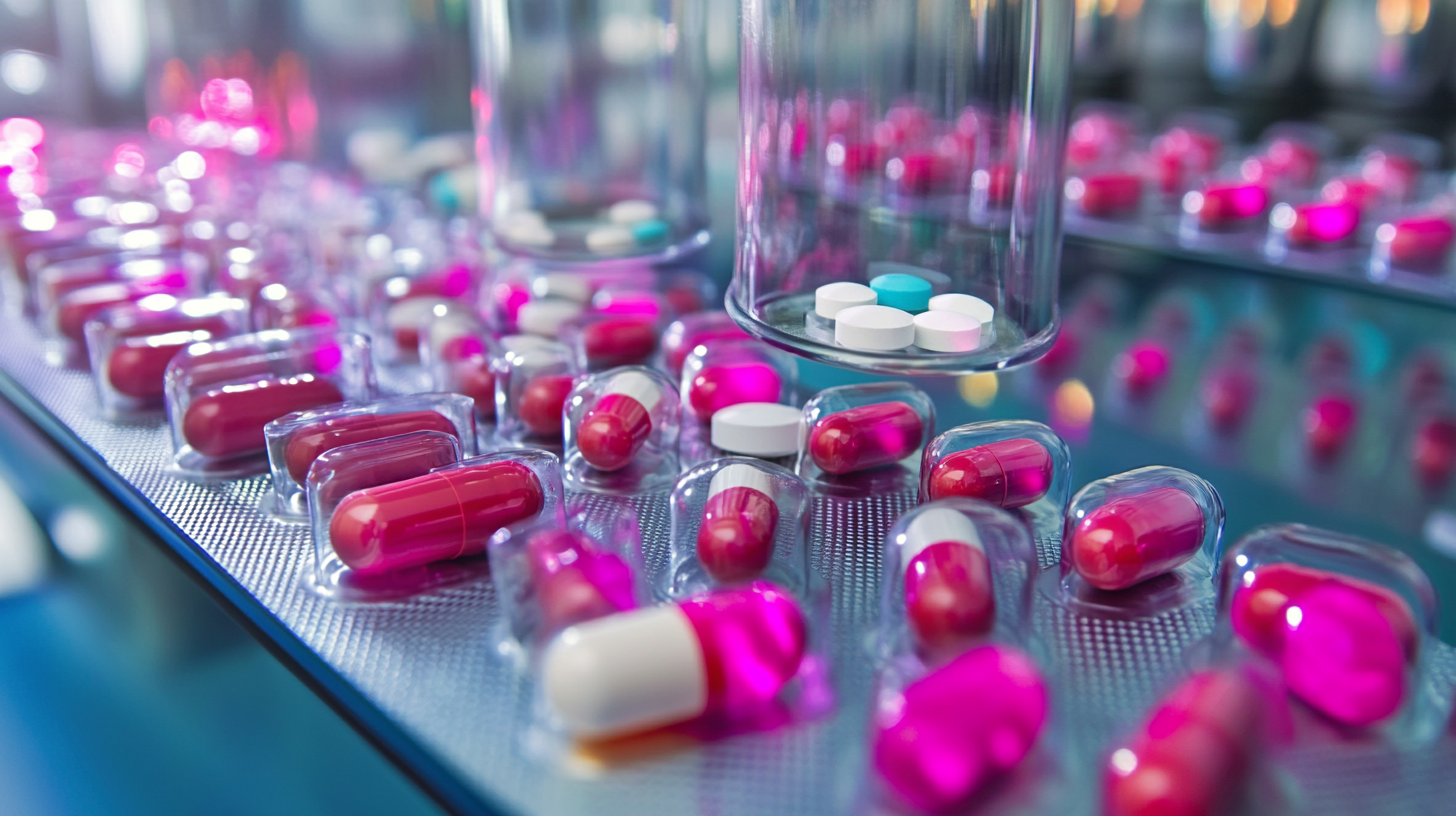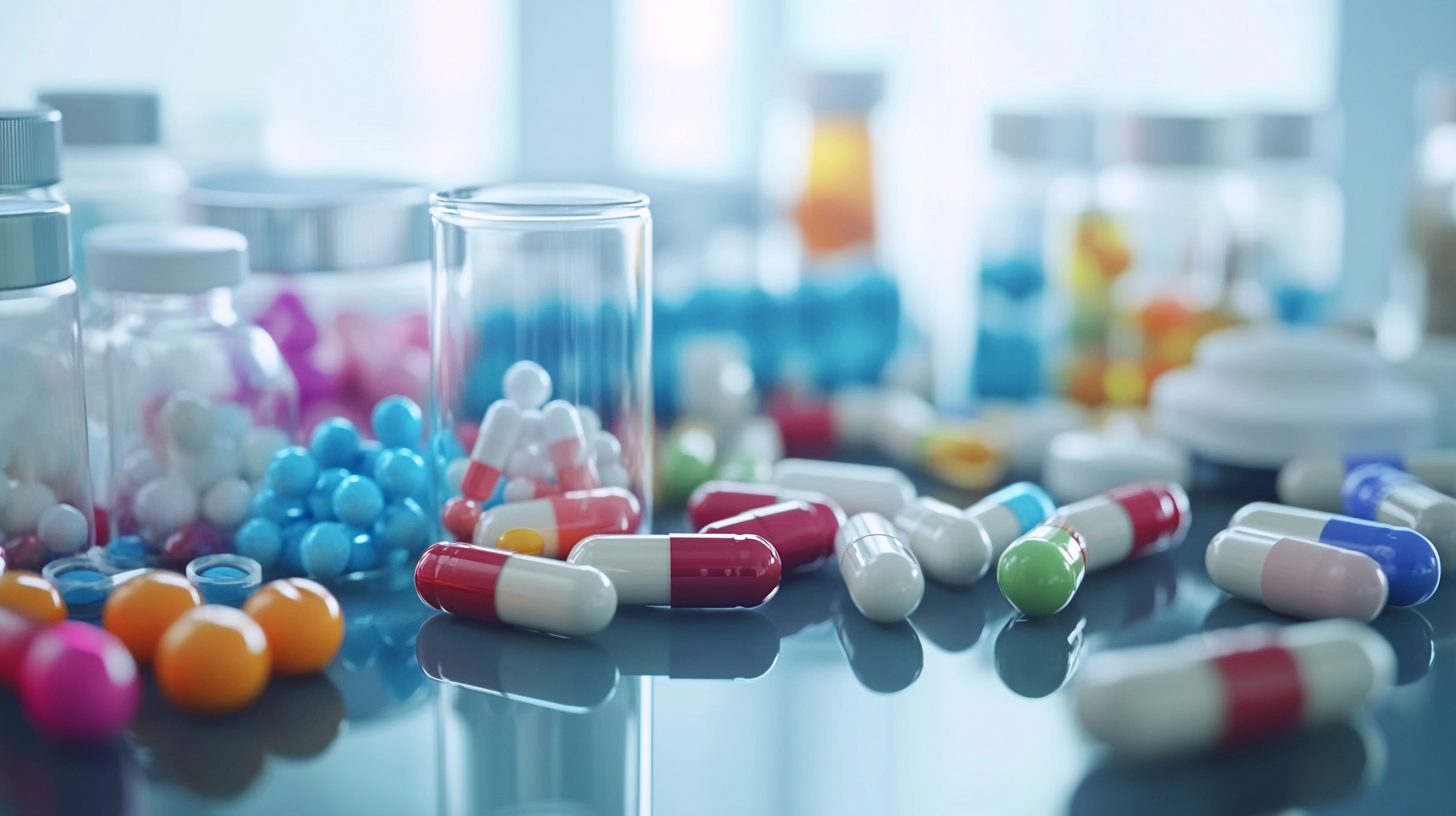The Pharmaceutical Medical market is on the brink of transformative changes, driven by advancements in technology, regulatory shifts, and evolving patient needs. According to the latest reports by Grand View Research, the global pharmaceutical market is projected to reach USD 1.57 trillion by 2025, growing at a CAGR of 6.3%. This growth is fueled by increasing investments in research and development, with a focus on personalized medicine and biotechnology solutions. As healthcare providers and pharmaceutical companies adapt to these trends, they must navigate challenges related to cost, accessibility, and regulatory compliance.
 Meanwhile, insights from industry experts suggest that integrating artificial intelligence and data analytics will play a crucial role in optimizing drug development processes and enhancing patient outcomes. As we look ahead, understanding these trends and leveraging key statistics will be essential for stakeholders aiming to thrive in the dynamic Pharmaceutical Medical landscape.
Meanwhile, insights from industry experts suggest that integrating artificial intelligence and data analytics will play a crucial role in optimizing drug development processes and enhancing patient outcomes. As we look ahead, understanding these trends and leveraging key statistics will be essential for stakeholders aiming to thrive in the dynamic Pharmaceutical Medical landscape.
As the pharmaceutical industry evolves, identifying key performance indicators (KPIs) will be crucial for manufacturers aiming to stay competitive by 2025. KPIs serve as measurable values that can help businesses assess their success in meeting strategic and operational goals. In the coming years, metrics such as
research and development efficiency, regulatory compliance rates, and
customer satisfaction will be more important than ever. Tracking these indicators will allow manufacturers to streamline operations, enhance product quality, and ultimately improve patient outcomes.
In addition to traditional KPIs, incorporating
digital health metrics will also become essential. As telemedicine and digital therapeutics gain traction, pharmaceutical companies must monitor metrics related to digital engagement and health outcomes derived from technology-based interventions. This shift not only reflects the changing landscape of patient care but also underscores the need for manufacturers to integrate innovative solutions into their business models.
By focusing on these evolving KPIs, pharmaceutical manufacturers can better align their strategies with market demands and ensure their relevance in a rapidly transforming industry.
In the rapidly evolving pharmaceutical landscape, understanding regulatory compliance trends is crucial for manufacturers aiming to thrive by 2025. A recent report from the Global Regulatory Affairs Association indicated that approximately 68% of pharmaceutical companies are prioritizing compliance with stricter regulations as a strategic move to enhance product safety and marketability. This shift is driven by an increasing demand for transparency, especially in areas such as clinical trials and drug manufacturing processes.
Moreover, the FDA's recent guidelines underscore the importance of digital technologies in regulatory compliance, with 55% of surveyed industry experts believing that adopting advanced digital solutions can streamline compliance and reduce costs. As pharmaceutical firms invest in technologies such as AI and blockchain, they are better positioned to meet global regulations while minimizing risks associated with non-compliance. Countries with stringent regulatory frameworks, like the U.S. and EU member states, are leading this transformation, emphasizing the need for continuous adaptation among manufacturers to ensure adherence to these evolving standards.
The ongoing complexities of global supply chains continue to challenge businesses, particularly in the pharmaceutical sector. Recent geopolitical tensions and unprecedented disruptions, such as those caused by the COVID-19 pandemic, have exposed vulnerabilities that many organizations were previously unaware of. As supply chains become increasingly affected by events like missile attacks or conflicts such as the Russian-Ukrainian situation, it's vital for companies to evaluate their supply chain strategies.
Investing in supply chain resilience emerges as essential for navigating these tumultuous times. Businesses must prioritize flexibility and adaptability to weather future disruptions effectively. Utilizing smart manufacturing techniques and fostering strong relationships within the supply chain can create a more robust framework capable of withstanding economic shocks. As our understanding of supply chain vulnerabilities deepens, adopting proactive measures to enhance resilience will not only protect against immediate threats but also position firms for sustainable growth and a competitive edge in a post-pandemic landscape.
| Statistic | Value | Year |
|---|---|---|
| Global Pharmaceutical Market Size | $1.5 Trillion | 2025 |
| Increase in Generic Drug Market | 25% | 2025 |
| Manufacturing Disruption Rate | 30% | 2023 |
| Estimated Recovery Time Post-Disruption | 6 Months | 2023 |
| Projected Growth Rate of Biopharmaceuticals | 10.5% | 2025 |
| Digital Transformation in Pharma | 70% | 2025 |
As the pharmaceutical industry evolves, the integration of advanced technologies such as artificial intelligence (AI) and automation is set to reshape manufacturing processes dramatically by 2025. These innovations promise not only to enhance operational efficiency but also to improve product quality and compliance with regulatory standards. By harnessing AI, companies can optimize supply chain management, predict maintenance needs, and even streamline drug development processes, resulting in faster time-to-market for new therapies.
To effectively implement these technologies, pharma companies should focus on upskilling their workforce. Investing in training programs that equip employees with the necessary knowledge to work alongside AI and automation tools is critical. Furthermore, establishing a culture of innovation within the organization can foster acceptance and encourage the exploration of cutting-edge solutions.
Another key tip is to prioritize partnerships with technology providers. Collaborating with experts in AI and automation can help companies navigate the complexities of integration and leverage the latest advancements tailored to their specific needs. By staying informed about industry trends and proactively adapting to technological changes, pharmaceutical manufacturers can not only remain competitive but also lead the way in drug innovation and delivery.

As the pharmaceutical industry evolves, sustainability practices are becoming increasingly crucial, with a significant shift toward green manufacturing trends anticipated by 2025. Many companies are recognizing that integrating eco-friendly processes not only benefits the environment but also meets the growing consumer demand for sustainable products. Key statistics indicate that over 70% of pharmaceutical firms are planning to adopt greener manufacturing techniques, aiming to reduce waste and energy consumption. This trend is largely driven by regulatory pressures and a stronger public emphasis on corporate responsibility.

In addition, innovative approaches such as the use of biodegradable materials and energy-efficient technologies are gaining traction. For instance, some companies have reported a 30% reduction in energy costs upon implementing renewable energy sources in their production lines. Furthermore, collaborations between industry leaders and sustainability experts are fostering the development of best practices that align profit-driven goals with environmental stewardship. By 2025, we can expect these green manufacturing trends to reshape the pharmaceutical landscape, creating a more sustainable and responsible industry that prioritizes both health and the planet.